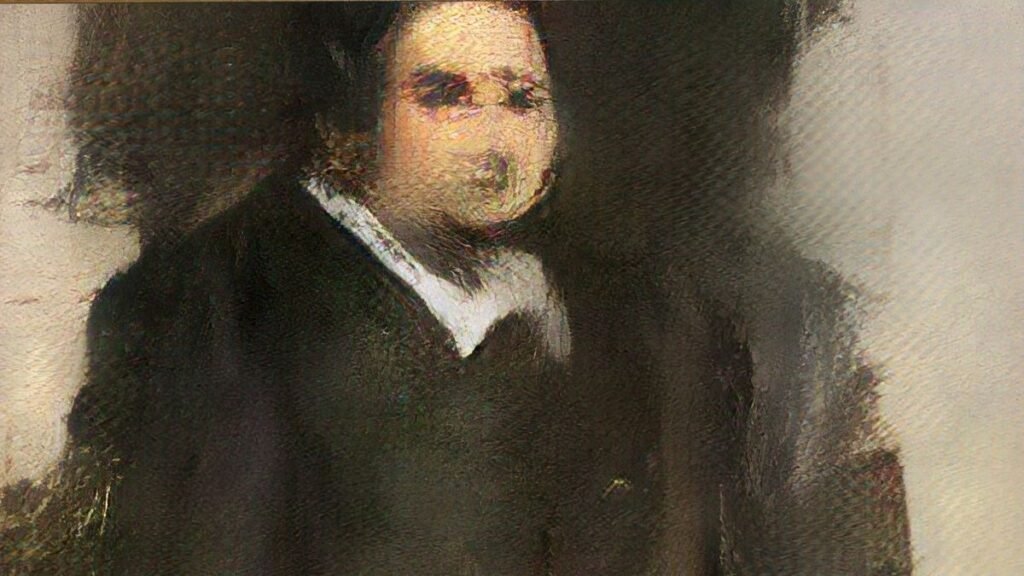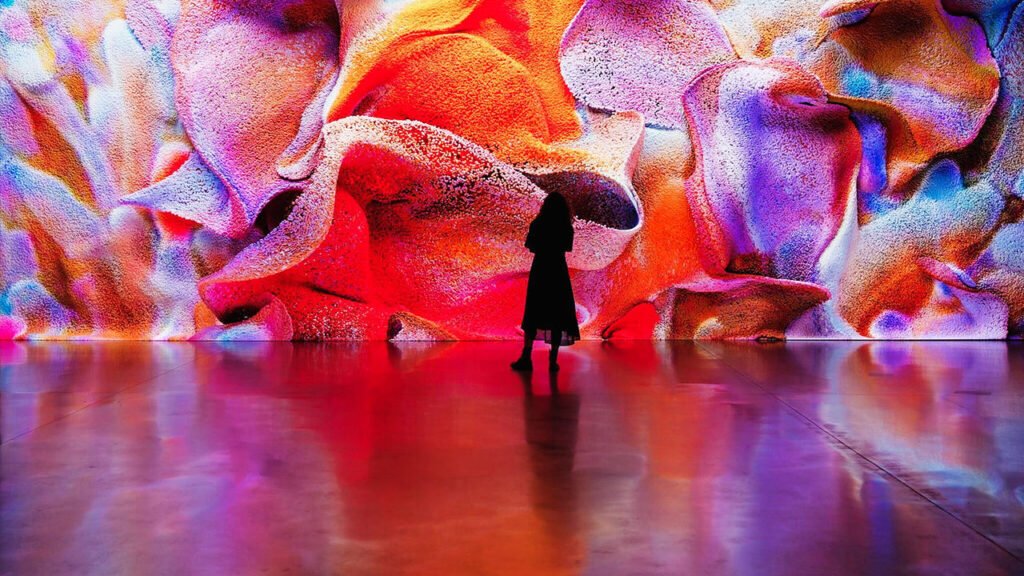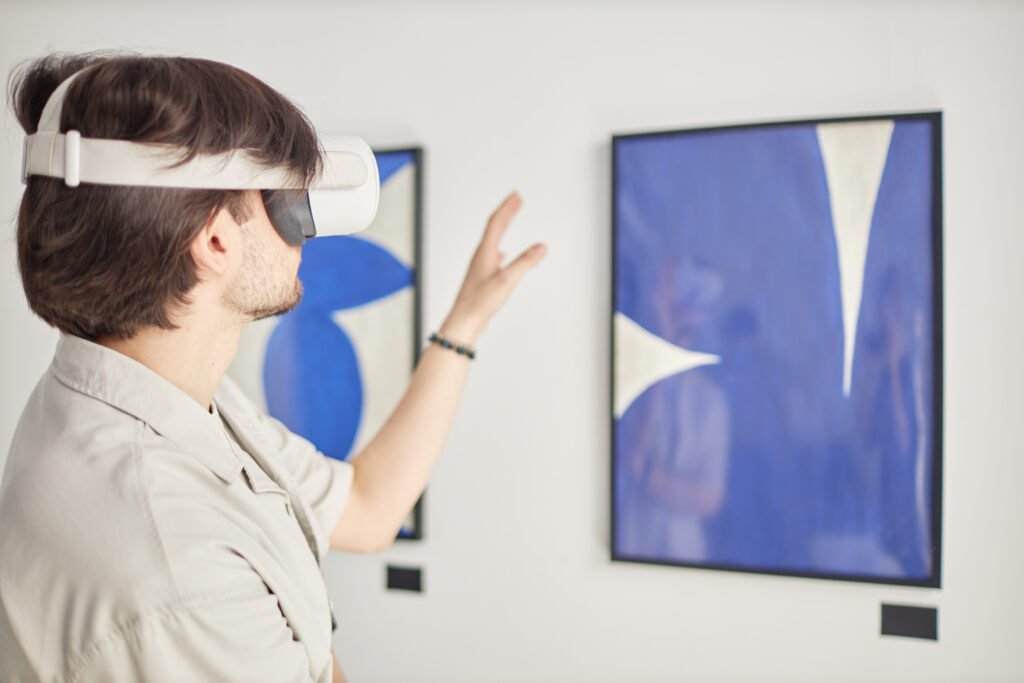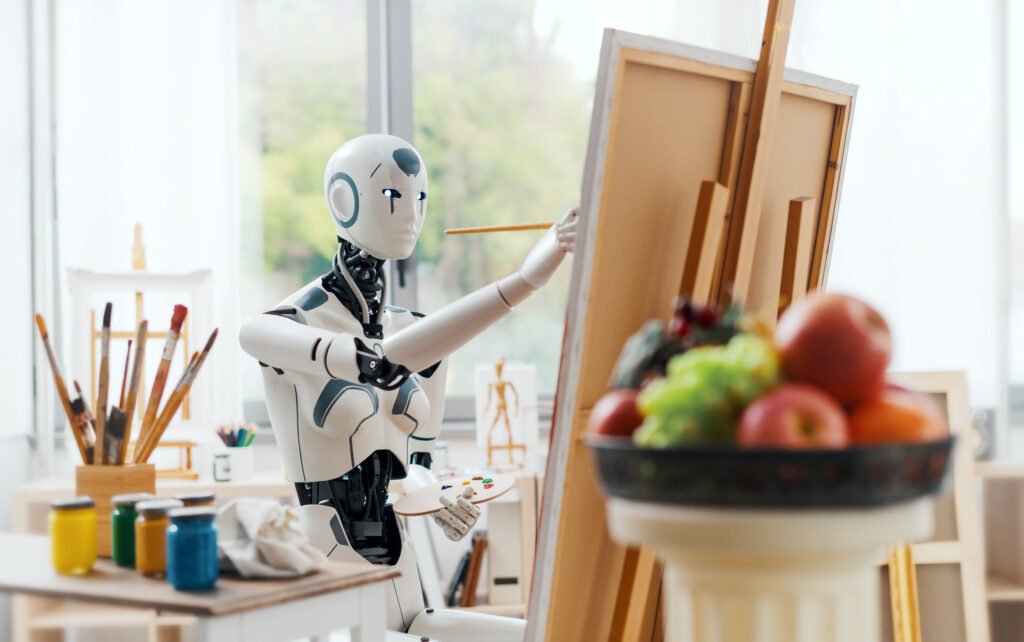Artificial intelligence is deeply and irreversibly transforming the world of contemporary art. Today, algorithms are already involved in the creation of works exhibited in museums, galleries, and international fairs. This growing presence has sparked intense debates about authorship, creativity, and aesthetic value in the 21st century.
While many artists see AI as a promising ally, others view it as a threat to the uniqueness of human expression. In this scenario, one inevitable question arises: is artificial intelligence collaborating with art or trying to replace it?
Tool or Competitor? The Role of AI in Contemporary Artistic Production
Since 2018, the art world has paid closer attention to artworks generated by algorithms. A significant milestone was the portrait “Edmond de Belamy”, auctioned for $432,000 by Christie’s. The image was created by an AI system trained on thousands of classical paintings. Since then, buying contemporary art has come to include works produced by machines.

According to the study Creative AI: Possibilities and Limitations, from the Oxford Internet Institute, published in 2020, machine learning algorithms are already capable of identifying visual patterns, learning from historical collections, and generating new compositions with their own identity. The artwork is no longer just a reflection of the human artist but begins to express computational logic.
Artist Refik Anadol, known for her visual and sound installations, uses AI as an extension of her creativity. In her projects, public data is processed by neural networks to generate immersive experiences that blend art, science, and technology. In this context, artificial intelligence does not steal the artist’s spotlight. On the contrary, it offers new tools to enhance creation.

Ethical Impacts and Changes in the Contemporary Art Market
As AI advances, important ethical concerns arise. One of the main issues is the unauthorized use of artworks to train creative algorithms. According to the study AI and the Arts, from the University of Cambridge, published in 2022, many datasets used by AI systems were built from images collected online without proper credit or consent from the original authors.

Moreover, there is a direct impact on the market. Buying contemporary art generated by AI often means paying less than for works made by human artists. This puts pressure on prices, shifts sales logic, and forces the sector to rethink its strategies. Platforms offering AI-generated art challenge even the definition of the best place to buy art.
Despite this, the scenario is not one of replacement but of coexistence. AI represents a new, parallel language that can coexist with traditional production. The sale of contemporary art now includes not only aesthetics but also the discussion about origin, process, and ethics behind creation.



